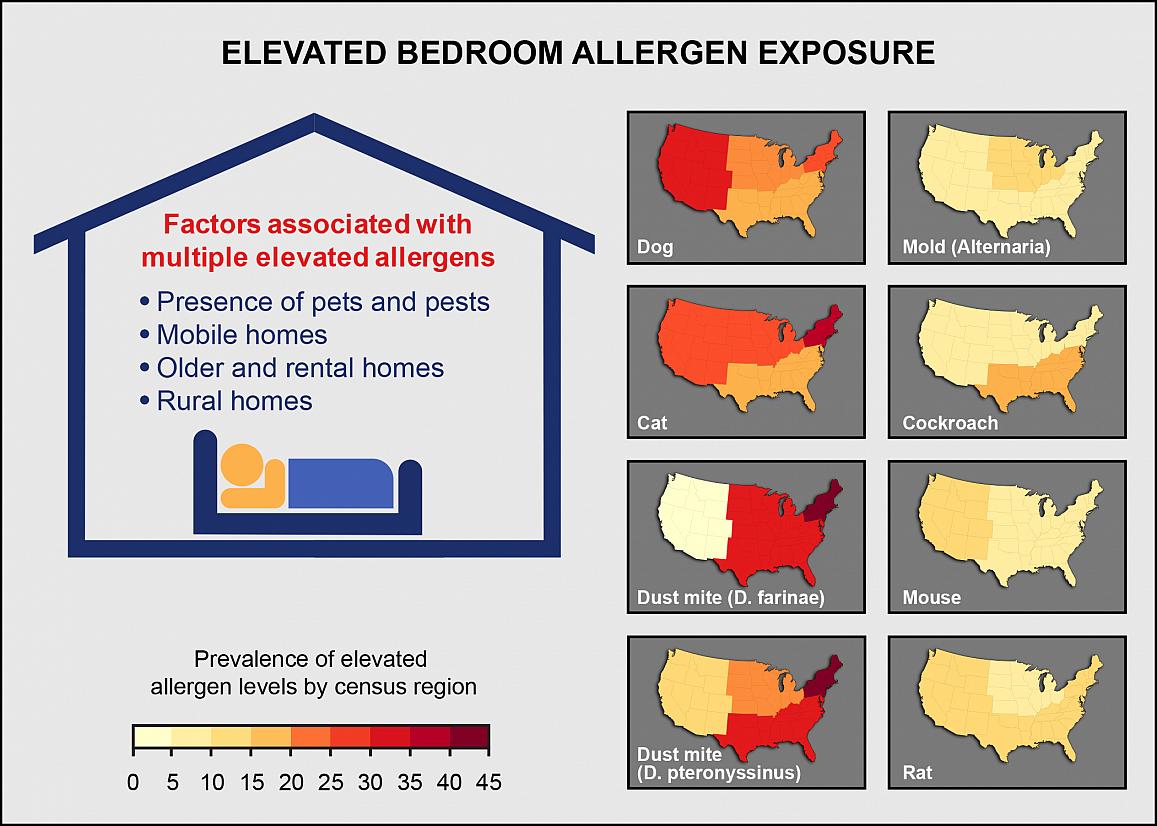Allergens widespread in largest study of U.S. homes
Allergens are widespread, but highly variable in U.S. homes, according to the nation’s largest indoor allergen study to date. Researchers from the National Institutes of Health report that over 90 percent of homes had three or more detectable allergens, and 73 percent of homes had at least one allergen at elevated levels. The findings were published November 30 in the Journal of Allergy and Clinical Immunology.
“Elevated allergen levels can exacerbate symptoms in people who suffer from asthma and allergies, so it is crucial to understand the factors that contribute,” said Darryl Zeldin, M.D., senior author and scientific director at the National Institute of Environmental Health Sciences (NIEHS), which is part of NIH.
Using data from the 2005-2006 National Health and Nutrition Examination Survey (NHANES), the researchers studied levels of eight common allergens – cat, dog, cockroach, mouse, rat, mold, and two types of dust mite allergens – in the bedrooms of nearly 7,000 U.S. homes.

Factors contributing to elevated bedroom allergen levels include presence of pets and pests, type of housing, and living in rural areas. Individual allergens vary by geographic area.
This page was last updated on Friday, January 21, 2022